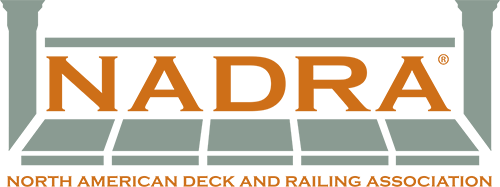After grabbing my bag off of the baggage carousel at the Raleigh Durham airport, I turned around and bumped into a guy holding a stack of hats causing him to drop several on the floor. I’m not sure why they weren’t in a bag or box as it looked like he was struggling to hold them even after I helped him pick them up and would be dropping them again soon. But the experience made me think about life as a contractor and how many hats we wear each day, and how easy it is to drop or neglect things when you try to carry too much of a load.
Structure:
Depending on how your business is set up, you’re likely wearing somewhere between many and too many hats. In other words, you have numerous responsibilities as a small business owner that might otherwise be delegated to multiple team members with a larger company. The more you wear, the less focus you have and the less effective you can be with each. If you’re too busy, some of them are neglected and never put on your head at all. The actual building aspects of carpentry, production management, job coordination, and other field duties can easily fill a day. But time is also needed for running leads, estimating, designing, selling, planning, permitting, bookkeeping, office management, customer communication, fielding phone calls, and dealing with the crisis of the day. Most, if not all of these aspects are present with a company of any size with the only difference being the volume and scale required for each.
Delegate:
If you are structured with team members in place with delegated duties then this is not a problem. But many deck builders and remodelers are not set up this way and are either limited or don’t have the luxury of having administrative help, construction managers, and salespeople. Smaller company owners tend to try to do it all and wear most if not all of the hats working long days, evenings, and weekends. The mission should not necessarily be to learn to better wear all of the hats, but more to figure out a way to shorten the wear time or to put some on someone else’s head. It requires that you delegate duties where you can or outsource aspects when possible. The goal is to figure out how to buy back time through a combination of delegating duties and improving or adopting more efficient systems within your operational process and to become as efficient and organized as possible. The outcome should be to gain blocks of time that allow you to improve business function and do it within a normal workday and not nights and weekends.
Let go:
Ask yourself what do you do that someone else could do for you? What is the cost to outsource certain aspects versus the real cost of you doing it? Who within your team is qualified and can make time to take on additional duties that afford you additional time? Where can you begin to take back minutes here and there that add up enough to shave hours off your current work week? What combination of restructuring can you do to increase workable time within your day, week, and month? If you can do this, it will allow you to focus on priorities during a normal workday that otherwise roll over to your nights and family time.
I ran crews for over 30 years. In addition to an already overloaded workday, I would call in any supplemental material orders needed once a job was underway or run material out to the jobs. I pulled permits, called in inspections, and coordinated with each sub that was going to be involved with the job. I never seemed to have enough time to do the other things I needed to do and if I did, it was all rushed and often stressful. I needed more time to meet with customers, run sales calls, create designs, review and contract jobs. Then I had to prepare jobs and permit packages for sold jobs. Getting everything done required many long days, evenings, and Saturdays.
Over time I decided I had to realign some of my team’s job duties. I met with my leads and let them know that their role from that day forward included contacting and coordinating with subs to update them on when they could get on the job. They started calling in inspection requests and supplemental orders that were either delivered or they picked it up. They took on a limited but more significant role of communicating with the customer. One of them liked doing takeoffs so he started doing them after I gave him the structural drawings for an upcoming job. These simple aspects added a little time to their day but were easier to absorb into theirs than mine. It saved me time and prevented interruptions. Again, if your company is sizable enough that you have construction managers or field superintendents then these aspects are handled. But for many that are not change may be needed.
Additionally, I outsourced the permitting orders by using expediter and refined my pricing systems that accelerated the estimating and proposal process. The real game-changer occurred when I stopped giving free estimates and began charging a consultation fee. This aspect cut down on the time I spent running leads and creating proposals by 35%. It also created additional income and assisted with screening less serious inquiries and increased closing ratios.
Streamline:
Look at your process and where improvements and streamlining can be made. Simple marketing, better screening of leads, and quicker quote systems are a good start. Construction management software systems may be useful. The bookkeeping role can be outsourced as can permitting by using a permit expediter saving countless hours involved in this process. Even with the permitting aspect being done online, having someone else submit and follow it through the process is a time saver. This aspect alone can save days during the course of a few months. The permit expediters have developed relationships with building departments, and have the patience to spend half their day waiting to submit or review drawings. Compare their fee versus your time. Many building departments are requiring more detailed plans and drawings for deck projects so outsourcing this if possible may be worth considering.
Most lumberyards will deliver fill-in orders which keeps you on the job or allows more time for running leads versus running around doing this task yourself. Paying a “ trip charge” is less costly than you spending your time doing it. It just requires looking ahead so you know what you need before you need it. Use dumpster boxes if you’re not already to remove job debris instead of loading and running to the landfill. If you use your own dump trailer, pay someone else to make the runs and return it to the site. It’ll save you time and flat tires. If you have multiple crews your crew leader can call in for inspections, and coordinate trades. These are just examples of ways to begin to reduce the hat count and buy back more productive time for you.
Wear your best hats:
If you could improve overall efficiency with your operations through delegating duties and an improved process by 10%, you could recoup five weeks each year just based on fifty, 40 hour work weeks. In reality, we work many more hours than this but it gives you an idea of how gaining back time works and why it’s worth revisiting how you’re doing things now. For each hat that you take off, you add a block of time to work on your business providing even more focus on growing and improving profitability. You’ll likely increase your annual sales which may allow you an office administrator even if it’s part-time, who can now wear at least some of the hats. Working hard is great, but working smart and in an organized way is even better. Learn to prioritize and wear the hats that are best suited for you. By delegating the appropriate duties and streamlining you can create time that allows for a smoother operation and work less on evenings and weekends.
Bobby Parks / Instagram: @Bobbyparks007
Copyright March, 10 2021 – Bobby Parks





